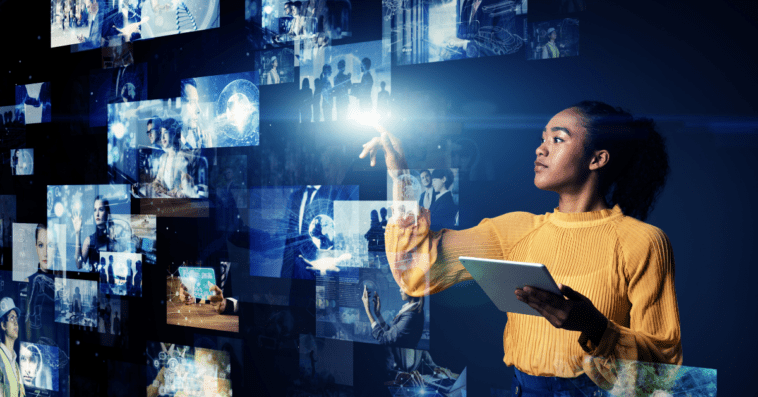In today’s digital age, the lines between entertainment and education are increasingly blurred, leading to the rise of ‘edutainment.’ This fusion is particularly evident in higher education, where college students are leveraging viral content not just for leisure but as a potent tool for learning. As digital platforms evolve, they become more integrated into the educational landscape, offering students innovative ways to grasp complex subjects, engage with their coursework, and enhance their academic experience.
In the realm of higher education, the pressure to excel academically is immense, with students often seeking resources like writing services that offer med school essay help to gain a competitive edge. Viral content, with its wide appeal and engaging format, serves as an unconventional yet effective educational resource. It breaks down traditional barriers to learning, making complex and often tedious subjects more accessible and enjoyable. This trend is particularly notable among students in demanding fields like medicine, where understanding intricate concepts can be crucial for success.
Harnessing Viral Content for Educational Gain
The Role of Social Media in Learning
Social media platforms are treasure troves of viral content, where memes, videos, and articles become tools for learning. College students are adept at navigating these platforms, using them to supplement their schoolwork and assignments. Educational content, when made viral, can transform a mundane topic into an engaging lesson, facilitating easier recall and understanding. This dynamic method of learning also allows students to stay updated with current trends and apply them to academic contexts, enhancing their educational journey.
Interactive and Collaborative Learning
Viral content often promotes interactivity, which can lead to collaborative learning environments. Students share and discuss these materials, leading to deeper engagement with the content and fostering a community of learners. This peer-to-peer interaction is a valuable aspect of learning in college, enhancing the educational experience beyond traditional classroom settings. Through these shared experiences, students develop critical thinking and problem-solving skills, preparing them for real-world challenges in their future careers.
Multimedia as a Learning Enhancer
Videos, infographics, and interactive games that go viral are not just entertaining. They serve as effective learning aids. They cater to various learning styles, whether visual, auditory, or kinesthetic, making them versatile tools for students tackling diverse subjects and assignments. This multimedia approach not only enriches the learning process but also ensures that students are more engaged and can retain information longer, making complex concepts more accessible and enjoyable to learn.
Emphasizing Digital Literacy and Critical Thinking
The proliferation of viral content on social media necessitates the development of digital literacy and critical thinking skills among students. In the age of information overload, the ability to discern reliable from unreliable sources becomes paramount. Engaging with viral educational content helps students to hone these skills as they learn to evaluate the credibility and relevance of information in real time. This critical engagement not only enhances their academic capabilities but also prepares them for navigating the vast digital landscape, ensuring they become discerning consumers and creators of online content.
Edutainment’s Impact on Academic Performance
Enhancing Retention and Understanding
The engaging nature of viral content aids in better retention of information, which is crucial for students during exams and when completing homework. By presenting information in a more relatable and simplified manner, viral content helps in demystifying complex concepts, leading to improved understanding and academic performance. This approach not only enhances learning outcomes but also builds confidence in students, enabling them to approach their studies with a more analytical and critical mindset.
Motivation and Engagement
The entertainment aspect of edutainment significantly boosts motivation and engagement among students. When college learning material is enjoyable, students are more likely to dedicate time to studying and engage more deeply with the content, leading to better academic outcomes. This increased engagement also fosters a love for learning, encouraging students to explore subjects beyond the curriculum and develop lifelong learning habits.
Bridging the Gap Between Theory and Practice
Viral content often provides real-world applications of theoretical concepts, helping students bridge the gap between what they learn in textbooks and how it applies in real-life scenarios. This practical aspect of learning is invaluable, especially for students in fields that require hands-on application of knowledge. By integrating theory with practical examples, students gain a more comprehensive understanding of their field, equipping them with the skills and knowledge to excel in their future professions.
Conclusion
The integration of viral content into educational strategies represents a significant shift in how students approach learning. It reflects a broader trend toward more dynamic and interactive forms of education that resonate with the digital-native generation. As educational institutions and content creators continue to explore this intersection, the potential for enhanced learning experiences is vast.
For students looking to further enhance their academic journey with reliable resources, read this Essay Hub review to find a writing service you can rely on. It’s clear that the future of learning in higher education is bright, with edutainment at the forefront of this transformative journey. As students and educators embrace this trend, the possibilities for innovation in learning and teaching are endless.








Comments